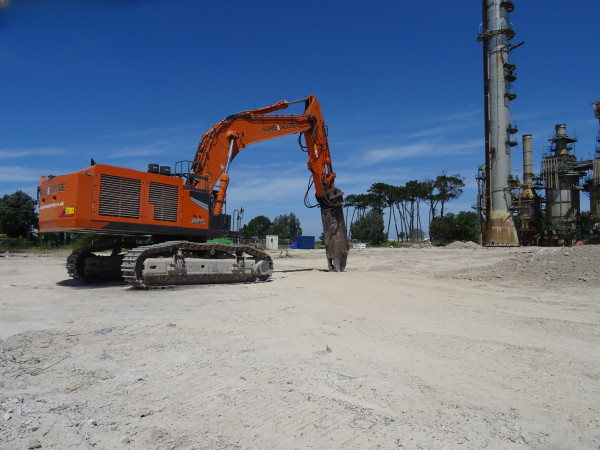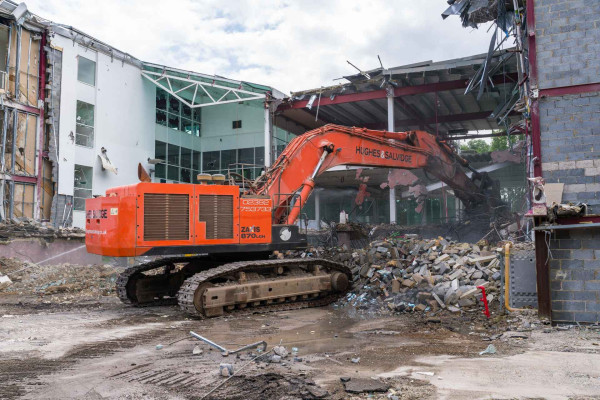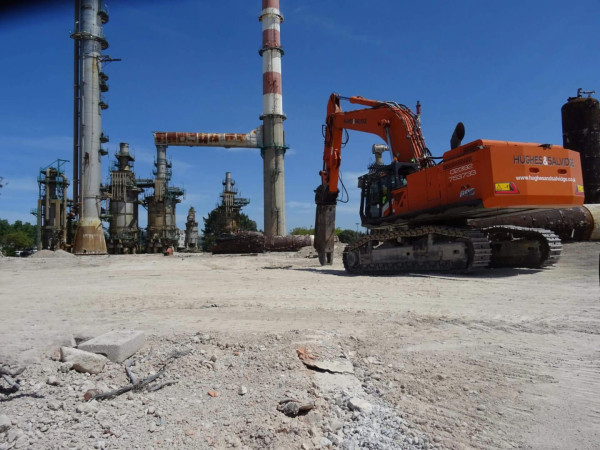How Technology is Advancing in the Demolition Industry
Luke Gould 11th October 2017
Technology in demolition has come a long way from the days of cutting a hole in the base of an industrial chimney, filling it with wood or combustible material, setting fire to it and then watching the chimney come down.
Advances in technology and innovation within the demolition industry have progressed over the decades to ensure the high-risk sector can provide systems and methods to not only improve performance but also enhance health and safety and environmental approaches.
Uses of drones in Demolition
One such technological advance is the use of drones. We ourselves possess a drone and have in the past used it for surveying sites as part of the tender process, along with also reviewing the progress of a project, and providing images for marketing purposes.
The drone has the capability to cover a great area in a short space of time, without disturbance or hindrance at ground level, and if need be, provides footage from areas that are inaccessible to personnel on the ground.
The advanced capabilities of the camera on a drone provides detailed and clear images, which are easily stored on a memory stick and can then be saved or shared at a later date. This proves invaluable when surveying, assessing or marketing a project.

SiteZone proximity warning system
Hughes and Salvidge have also taken advantage of a recent innovation in technology in demolition by initiating the use of the SiteZone Proximity Warning System. The system was initially used on all plant on our projects at Heathrow Airport and is now used across other projects and sites.
SiteZone uses radio frequency identification (RFID) detection, which can transmit around corners and through foreign object debris, dust, smoke and poor light conditions.
Our plant is fitted with base stations, while site personnel have RIFD transponders fitted to their hard hat. When a site worker breaches a predefined detection zone, both the worker and driver receive a proximity warning.
The RFID tag vibrates, making the site worker aware of the vehicle, while the driver is alerted by sound and flashing lights in the cab of the vehicle. This two-way alarm feature is fundamental to site safety, since responsibility for avoiding accidents is shared by both parties.
SiteZone also logs incident data which can be transmitted and viewed by using the telematics function. It collects data from SiteZone in the event of a zone breach to help monitoring and the improvement of site safety.
Site surveys carried out by robotic apparatus
Another development in technology in our industry has been the introduction of remote robotic apparatus to carry out surveys, inspection and demolition related works.
Such devices can be used when a structure has been deemed unsafe or insecure and is therefore not accessible to personnel. The remote robotic devices safely access the structures and carry out a variety of surveying, inspection or demolition related tasks, eliminating the risk to life.
3D imaging within demolition
The demolition industry has also embraced advances in computer software and like other sectors has incorporated techniques such as 3D imaging when constructing a method statement or design for a demolition project.
Technology advances in tools and equipment
Finally, technology has advanced in the tools and equipment and protective wear used in demolition.
Personal Protective Equipment (PPE) has never been more durable, and the modern materials used in protective wear and clothing has made it easier for operatives to remain mobile and complete their tasks while being protected.
Engine advancements in the plant and machines we use is also continually improving and fuel consumption and emissions are lower than ever before on modern machines thanks to engine technology. Advances in hydraulic technology is also improving the performance and durability in such plant.
Many of Hughes and Salvidge’s plant are manufactured by Hitachi and, again, through technological advance we can maintain all of our plant though their e-global system. This is an internet-based vehicle management system ‘e-Service Owner’s Site’, powered by Hitachi.
It provides information on the maintenance status of machines and also service history and requirements, notifying us when a service is due. The system also monitors the performance of the machine and has an inbuilt diagnostics tool that will alert us if the machine is not operating as it should be.
The system can tell if a part needs replacing and it will alert a maintenance engineer to site. The e-global system also provides information regarding the machines environmental performance including data about CO2 emissions, idling time, and fuel consumption levels.



